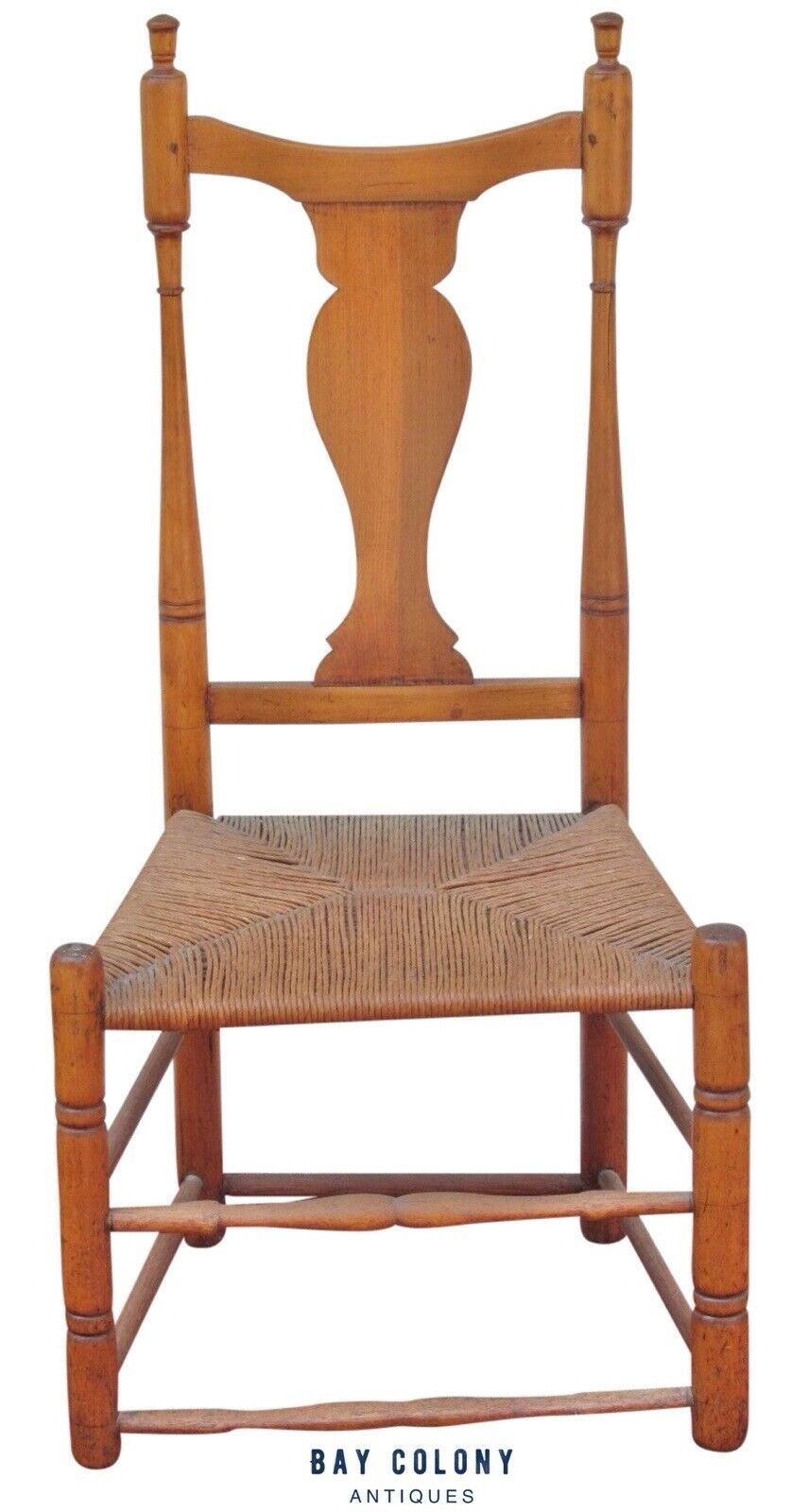Antique
18th Century New England Queen Anne Side Chair With Yolk Crest & Button Feet
18th Century New England Queen Anne Side Chair With Yolk Crest & Button Feet
Couldn't load pickup availability
With our absolute highest compliments Bay Colony Antiques takes the utmost pleasure in offering this wonderful early American side chair. This specimen is a choice example of a mid-18th century colonial era offering with a distinct interpretation of the American Queen Anne form. The chair originates from the New England countryside perhaps somewhere close to Central Massachusetts or Connecticut with applewood selected as the primary wood. The center of the chair features an intricately formed back splat which is scrolled in the manner of a Grecian vase and displays fine curvature and proportions. The negative space created between the splat and each chair upright forms opposing stylized penguins complete with rounded heads, sharp pronounced beaks, and rounded bellies. This whimsical design element is featured on some of the finest chairs produced during the 18th century and demonstrates the chair builder's mastery of both creative and traditional construction techniques.
The upper crest rail is formed after a traditional oxen yolk which although rare was a distinctive design element throughout the Queen Anne period. Each of the chair uprights are turned in the early manner of colonial era chair making with column linear stylings and acorn finials atop each post. The chair frame is made as strong as possible with the addition of hand cut pegs at the critical joints which have kept the piece strong and reliable throughout several centuries. There is an old restoration to the upper right of the chair frame which is sturdy and of no consequence. The rush woven seat is also a strong and capable of supporting a sitter as long as the chair is treated with respect to it's considerable age. We mostly see similar chairs used as accent chairs in historic interiors however the tightly woven seat does allow for regular or occasional use. The chair has two front legs which are bead and sausage turned and features well formed double stretcher turned supports. Either side is also enhanced with double stretcher braces along with a single stretcher spanning across the lower rear side. Most incredibly, the chair has retained the original turned button feet, which is notable as these chairs are nearly always terminated or reduced in height for various reasons throughout their incredibly long lives. This charming early example is truly a special and rare find with a wonderful form, scale, and patina not commonly found in today's market. The chair measures 19" wide x 14" deep x 39 1/2" tall with a 15" tall seat height.
Share























